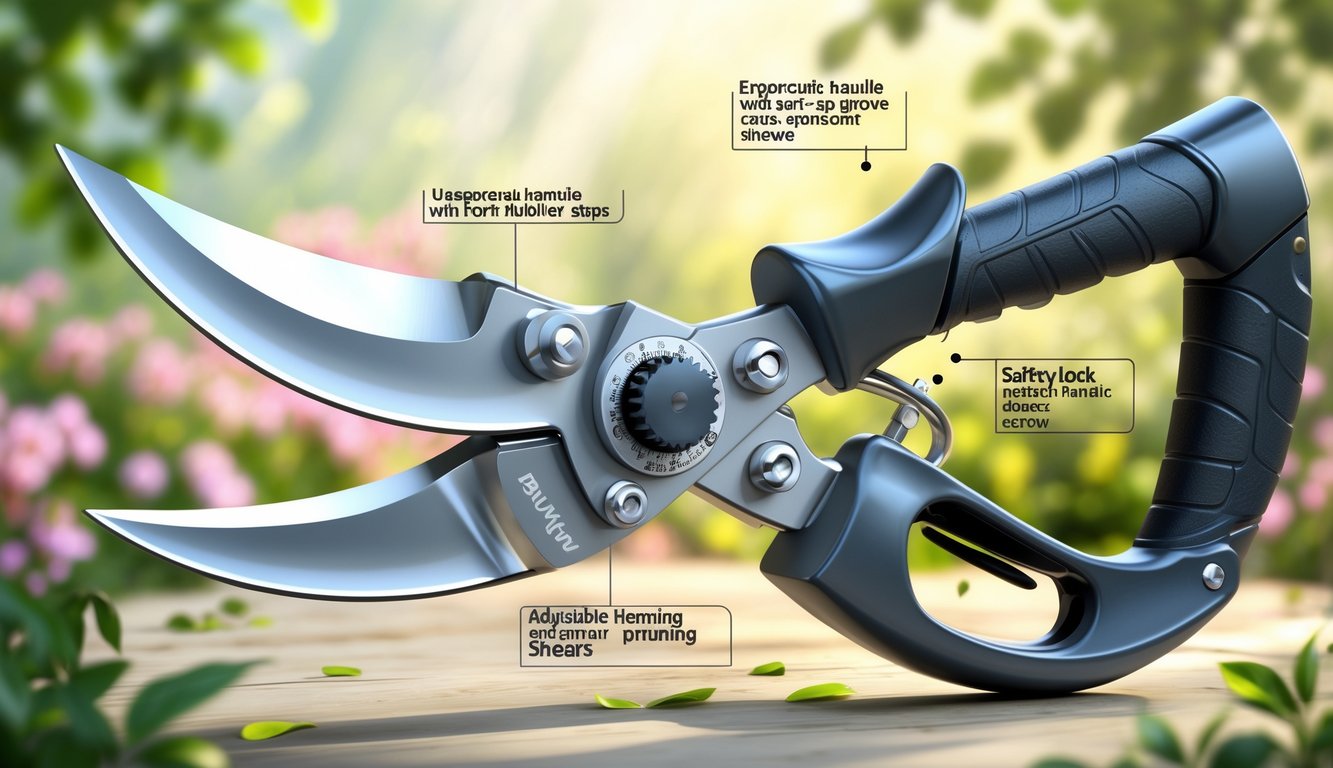
Unexpected Uses of Quality Pruners
People act like pruners are just for deadheading, but I end up using them for all sorts of stuff—cutting fruit stems, hacking back herbs, random shrubs I forgot about. The one decent tool at the bottom of my bag ends up saving me every time, even though it’s not what the manual says. I should keep better notes, but who does? Here’s a solid resource if you want to overthink it: choosing pruning shears.
Harvesting Fruits With Shears
Every time I lose those “special” fruit pickers (where do they go?), I just grab my pruners. Strawberries, pears, apples—just snip, don’t twist. If you try serrated scissors, you’ll regret it. The narrow, sharp jaws on a good bypass pruner actually feel surgical, which is more than I can say for half my kitchen gear. Felco brags about blade alignment, and, well, they’re not wrong.
People worry about bruising fruit—honestly, most of the bruises come from twisting, not cutting. Try it. I use pruners for grapes and blueberries too, because if you mess up, at least you get a clean cut instead of a squashed mess.
Biologists keep warning that dirty blades spread disease. Fair. That’s probably the only real reason to clean them between plants. Still, pruners save my wrists, keep branches healthy, and weirdly make me feel like I know what I’m doing.
Trimming Shrubs and Herbs
How many “herb snips” have I broken? Too many. I just use my main pruners for everything now—lavender, rosemary, thyme, whatever. Forget the tiny kitchen scissors. Bypass pruners go through even the woody bits, and suddenly I’m done before I get bored.
Sometimes I go after the boxwood or sage with the same tool, because who wants to swap tools every five minutes? Sometimes a branch snaps, sometimes it slices clean. No logic to it. But blade shape matters—straight, bypass, not those clunky anvils. There’s proof if you care: pruner differences.
Sharpening is annoying. My hedge looks ridiculous. But somehow, these pruners do more than the fancy “shrub” shears, and I can fix my mistakes faster than my neighbors, who still think their old tools are special.
Frequently Asked Questions
Just when I think I’ve seen every pruning shear feature, someone adds another—microserrations, hybrids, locks that make you feel like you’re in an escape room. My hands aren’t happy, but at least my plants are.
What innovative features should I look out for in pruning shears for tackling tough branches?
Gnarly lilac stems? I notice right away—SK5 high carbon steel, ratchet action, grippy handles. They sound boring, but they save your hands. Chromium plating? Maybe it’s just marketing, but these ratchet-action, high-grade steel pruners outlast almost everything else I own.
How do ergonomically designed pruning shears benefit gardeners with small hands?
My neighbor’s got tiny hands and still outpaces me every year. She swears by Gonicc Anvil Pruning Shears. “Ergonomic” is a word that gets thrown around, but if it means less pain, I’ll take it. The SK5 pairs actually fit, not just look cute.
Are there specialized pruning shears that can improve the health of my fruit trees?
Clean cuts on fruit trees—turns out, it actually matters. I trashed a peach branch last year and paid the price. By-pass pruners with sap grooves apparently help prevent disease, even if it sounds like sales talk. Some pros swear by them for orchards, but nothing saves a branch from my impatience.
Can you recommend pruning shears that are particularly suited for use with indoor plants?
I’m guilty of using kitchen scissors on my pothos. Don’t. Little bypass pruners with sharp blades work best—especially for those drama queen plants that hate rough cuts. Indoor shears are simple, but the lightweight ones on this list probably cost less than my last impulse plant buy.
Which pruning shears are considered the best for cleanly cutting through rose stems?
Look, if you’ve ever tried to wrangle a rose bush—yeah, I do this every June like I’m supposed to know what I’m doing—you get why sharp bypass shears aren’t just some garden snob thing. Rose stems? They’re out for blood if you show up with anything dull. I don’t know, maybe I’m projecting, but mine seem to punish me for even thinking about using last year’s rusty clippers. Every gardener I’ve cornered at a nursery mutters about anvil or bypass pruning shears with SK5 steel like it’s a secret handshake. Someone online claimed their three-year-old pair sliced through a half-inch stem like it was nothing, which is both a little unsettling and, honestly, kind of tempting. Should I believe them? Not sure, but I want to.
What are some heavy-duty pruning shear options that professional gardeners swear by?
So, mid-February rolls around and—because why not—my uncle’s back at it, hauling out these absurdly overbuilt shears he keeps bragging about. He swears they’re so tough he once cut copper wire with them. (Seriously, why would you do that? But also, don’t. Just don’t.) Anyway, “heavy-duty” apparently means ratchet or anvil-style, the kind with reinforced handles that, according to like a bazillion “pro gardener” best-of lists, will outlive us all. And yet—here’s the kicker—the lock on his “favorite” pair jams up every time there’s actual work to do. Every. Single. Year. Maybe that’s just the way it goes? Or maybe all these lists are just recycling the same ten brands and nobody’s actually tried them in the mud. I don’t know. I’m not convinced anyone has it figured out.